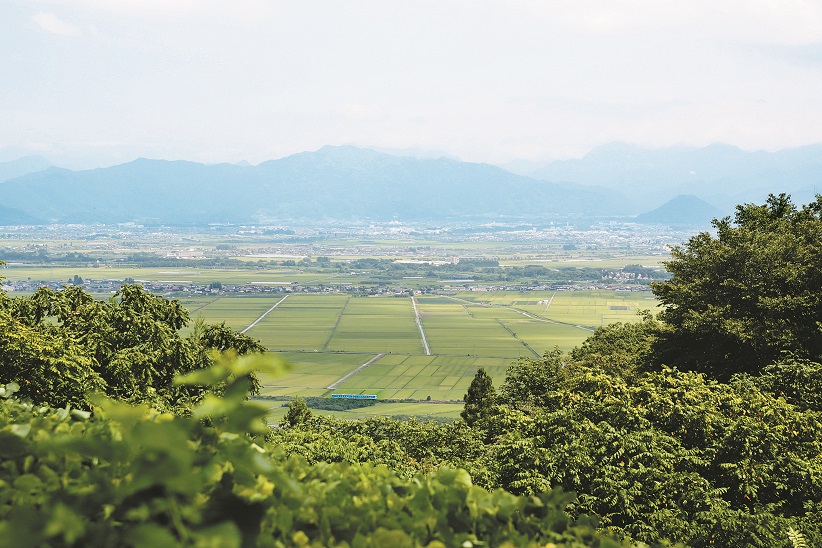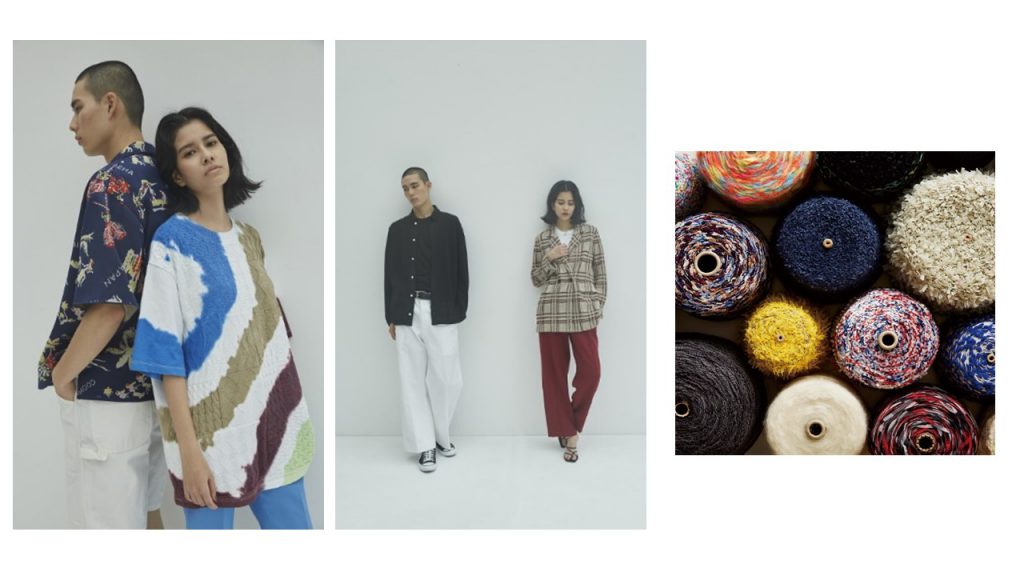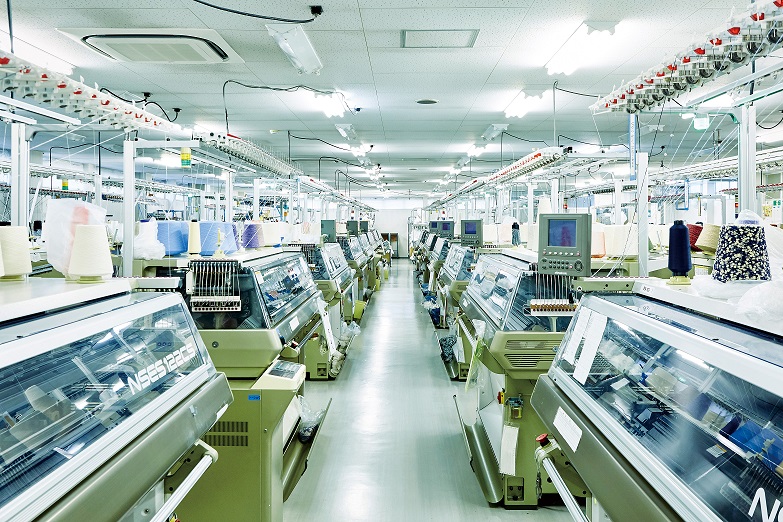In October 2019, Cool Japan Fund invested in M.M.LaFleur, the New-York based fashion brand founded by two Japanese women (click here to read the press release). The purpose of this investment is to communicate the allure of Japanese textile and materials overseas through M.M.LaFleur as a platform. For this purpose, since the investment, Cool Japan Fund have helped M.M.LaFleur connect with Japanese textile manufacturers.
Through this process, M.M.LaFleur collaborated with Yonetomi Seni Co., Ltd., a long-established knit maker from Yamagata prefecture in Japan. In this “CJ Insights”, we interviewed Miyako Nakamura, the co-founder and Chief Creative Officer of M.M.LaFleur, and Ken Oe, the CEO of Yonetomi Seni (click here to read the conversation).
This time, in order to delve into the excellence of Japanese manufacturing, we interviewed Mr. Ken Oe and asked about the background and difficulties of the challenges of taking on the world, and what local manufacturing needs to survive. (The content is as of January, 2021)
………………………………………………………………………………………………………………………………………..
<Profile of Ken Oe, CEO of Yonetomi Seni Co., Ltd. >
Lived in Yamagata up until high school and then studied marketing, design, and fabrics at a fashion college. He worked as staff member of a multi-brand store and joined Yonetomi Seni in 2007. Pursuing and seeking to express the limitless potential of the knitted tweed material, he created the company’s own brand COOHEM in 2010. He won the Tokyo Fashion Award in 2016. He has promoted Japanese factory brands in Japan and abroad as the company’s CEO since 2015.
………………………………………………………………………………………………………………………………………..
Q. Please take us through the creation of your own brand and launching new initiatives, while continuing the tradition of Yamanobe-machi, Yamagata prefecture, one of Japan’s great producers of knitted products.
In Yamagata, there were many factories which would dye thread made from the wool. After the war, many knitting factories were established and started to utilize the local sheep resources to make clothes. Our company also started by knitting sweaters by hand. Initially, it was people in Yamagata buying them, but the founder, my grandfather, would take the night train to make sales in Hokkaido and Aomori, and later introduced the products to department stores and wholesalers in Tokyo as well.
When I was a child, the company had become the region’s biggest knitting factory. Even at home, I’d heard about pioneering initiatives from the current Chairman, my father, so I think it’s only natural for me and the company to do new things. When I created our brand, there was some reluctance on the floor, but when I look back at how we achieved so much with the cooperation of artisans possessed with abundant techniques and experience and of other young employees, I really feel that this company has inherited a climate of trying out new things.

Q. Please tell us how the company’s own brand COOHEM came about.
After 2000, the Japanese-style OEM business that we had long had with Japanese apparel companies was putting pressure on factory management, and business was also declining. We were in a situation where it seemed that it would be difficult to sustain the company and continue doing business unless we created our own brand and started selling it ourselves. It was around that time that I joined the company. Rather than wanting to create a brand, the company was facing a situation where new business was needed to continue manufacturing in the company.
Having said that, we didn’t have the know-how and experience to create a brand, so we learned by imitation, invited buyers to exhibitions, and gradually built our catalog and website. We also only had four business clients in the beginning, and it took us 10 years to get us more than ten times. We also had a situation where selling our own brand actually led to OEM orders. I think having our own brand made it easier for us to explain to clients that “Yonetomi Seni is this kind of manufacturer.” We made our share of mistakes, but looking back, there was so much that came into view precisely because we climbed the ladder one step at a time.

▲(right) Fancy yarn that is indispensable for Knitted tweed born from the kōhen technique
Q. Characteristic of COOHEM is your original knitted tweed that is made through the kōhen technique of knitting together a variety of different materials, which other companies don’t have. How was it developed?
We had already had that technique, but we weren’t paying much attention to it in the company. In my previous job, I stood in the shopfront of a multi-brand store and came in contact with all kinds of clothes, so when going through the tens of thousands of fabric samples in the factory, I was confident that we could make wonderful clothes by arranging them in good ways. The general image of knitted tweed is that it’s thick and unrefined, but we were able to create unique colors as we made various arrangements and I feel the brand developed naturally.
It would normally take 60 minutes to knit one sweater, but it takes about 240 minutes if it’s COOHEM. We use several knitting machines, but each only produces 2.5 pieces a day. The productivity isn’t very high, but it’s difficult to mass produce in a big factory since we intricately combine multiple materials, and if it is produced in a small factory, it will be an expensive product and will not sell well. You could say that our medium-size factory is just the right size to produce reasonable lots.

Q. COOHEM has also been launched overseas. What challenges have you encountered as you expanded your market? Also, were there things you noticed for the first time when you went abroad?
We started selling overseas in the fall and winter of 2013. We had a lot of business in Asia, especially in Hong Kong and South Korea. We have had help through subsidies from JETRO and the Organization for Small & Medium Enterprises and Regional Innovation, JAPAN to open up the markets ourselves, gradually increasing the number of overseas wholesalers. However, we’ve often had the experience of a single order and then suddenly no contact and delayed payments without any notice. In this sense, I felt that it’s difficult to continue doing business overseas by ourselves.
I think Japanese brands are highly rated by overseas buyers for deliveries being on time and for not selling poor-quality products. The Japanese think that the West is on a higher level since Western clothing has a longer history in the world of fashion. I thought the same, but thinking about it rationally, I’ve come to think that this might not actually be the case. I say we shouldn’t be discouraged by our short history, but that it’s important to present things proudly without holding back also to overseas clients.
Q. In February this year, M.M.LaFleur started selling Yonetomi Seni knit jackets, creating broad opportunities for American women to wear them. How has it been actually doing this?
Until this point, we had been prioritizing sales of our own brand abroad, but we had also been thinking that we want to try out becoming an OEM for overseas brands too. However, some of our staff members were saying that they had no clue about how to deal with overseas brands. It was right then that we heard about M.M.LaFleur from Cool Japan Fund, and we thought this would be an easy way to get started. It simply entails taking the brand’s instructions in English and relaying them to the floor in Japanese, but it takes some getting used to, so this was an opportunity for that, I think.
I heard from the people in charge on the floor and the patterners (*) that the way of giving instructions is totally different from Japanese brands. In addition, it always takes a lot of time before they approve the swatch (color samples). In total, the lead time might take twice that of a Japanese brand. Sometimes they request patterns we’ve never seen in Japan. Each of these things is a learning opportunity, and then I think we just have to get used to it. This goes for everything, but it’s always the hardest in the beginning.
(*Specialists who make patterns (pattern papers) based on the designs the fashion designers create.)
M.M.LaFleur wants materials that working women can wear both at work and on their own time. I think we can use the strengths of our knitted tweed for this, so we’ll start by continuing to improve this series, and then I hope we can establish ourselves together with the brand. As we get used to dealing with each other and produce a track record, we hope to develop a variety of products, such as cashmere sweaters.
Q. What kind of company do you want Yonetomi Seni to become in the future?
In the current situation of COVID-19 pandemic, I feel that there’s a rapid trend of makers getting involved in sales, such as another company in this industry that used crowdfunding to sell their own products. I think the time is coming soon when manufacturing will use online sales and become seamlessly connected with retail, so that the same energy is devoted to manufacturing as retail. They are currently focusing on Japan, but if they start selling more overseas, I think Japan’s manufacturing industry can survive. We are also aiming to become a specialty retailer that sells what we ourselves make, centering on our main business that is manufacturing.
Right now, there are numerous factory brands in the industry where the factories do the manufacturing and sales themselves, and I think that’s a good thing. In particular, I hope that COOHEM will become something that constantly communicates a new form of factory brand. For example, we have previously made kimono and shoes utilizing our knit textiles, in collaboration with each specialized company. In this way, I want to actively get involved in trying new things, which is in Yonetomi Seni’s DNA, by collaborating in areas that aren’t clothes and expanding our business overseas.
(The End)
<Related Articles>
・《A Conversation》“M.M.LaFleur”, the NY Fashion Brand× “Yonetomi Seni”, the Japanese Traditional Knit Maker (PartⅠ)
・《A Conversation》“M.M.LaFleur”, the NY Fashion Brand× “Yonetomi Seni”, the Japanese Traditional Knit Maker (PartⅡ)













